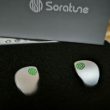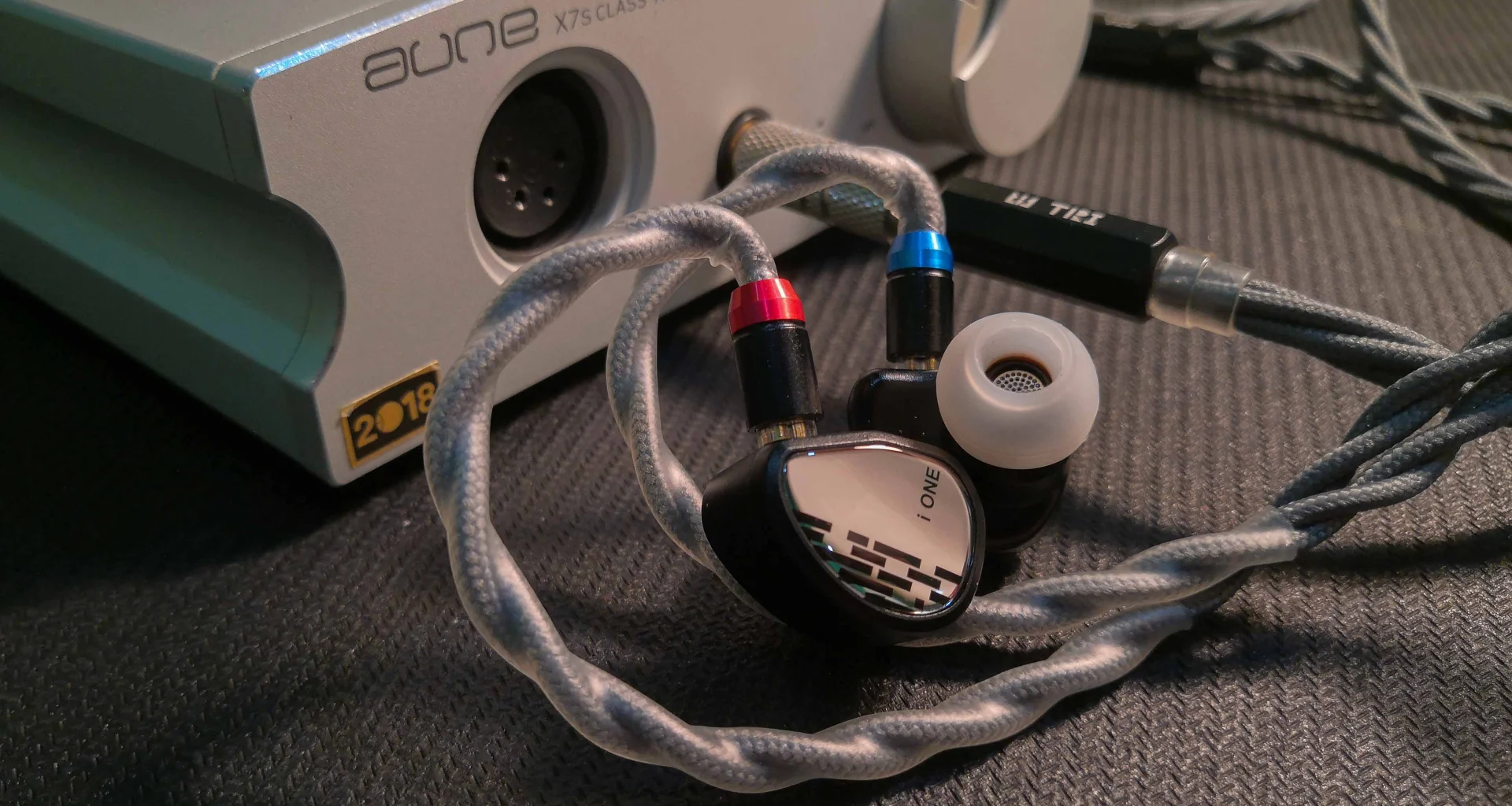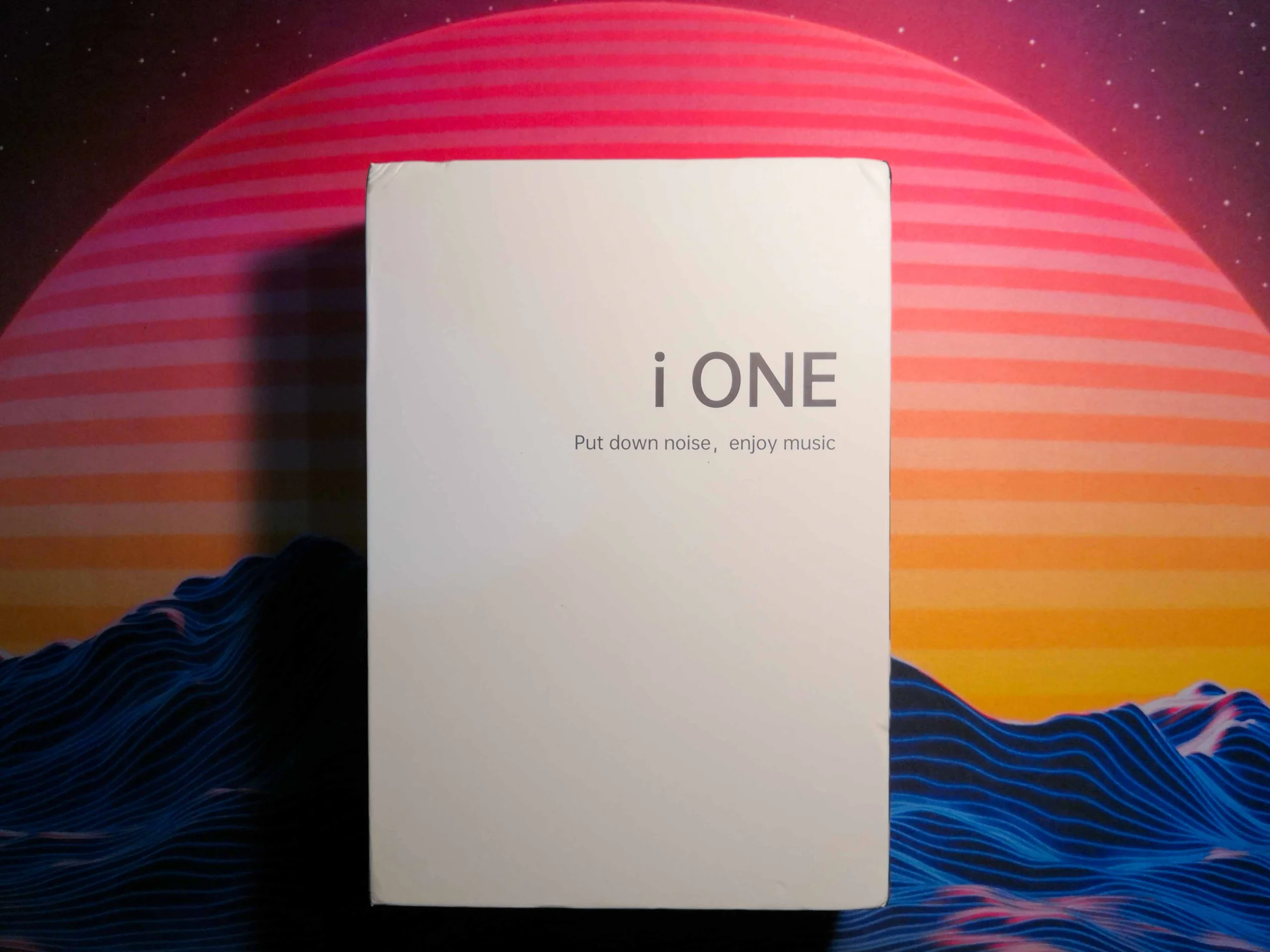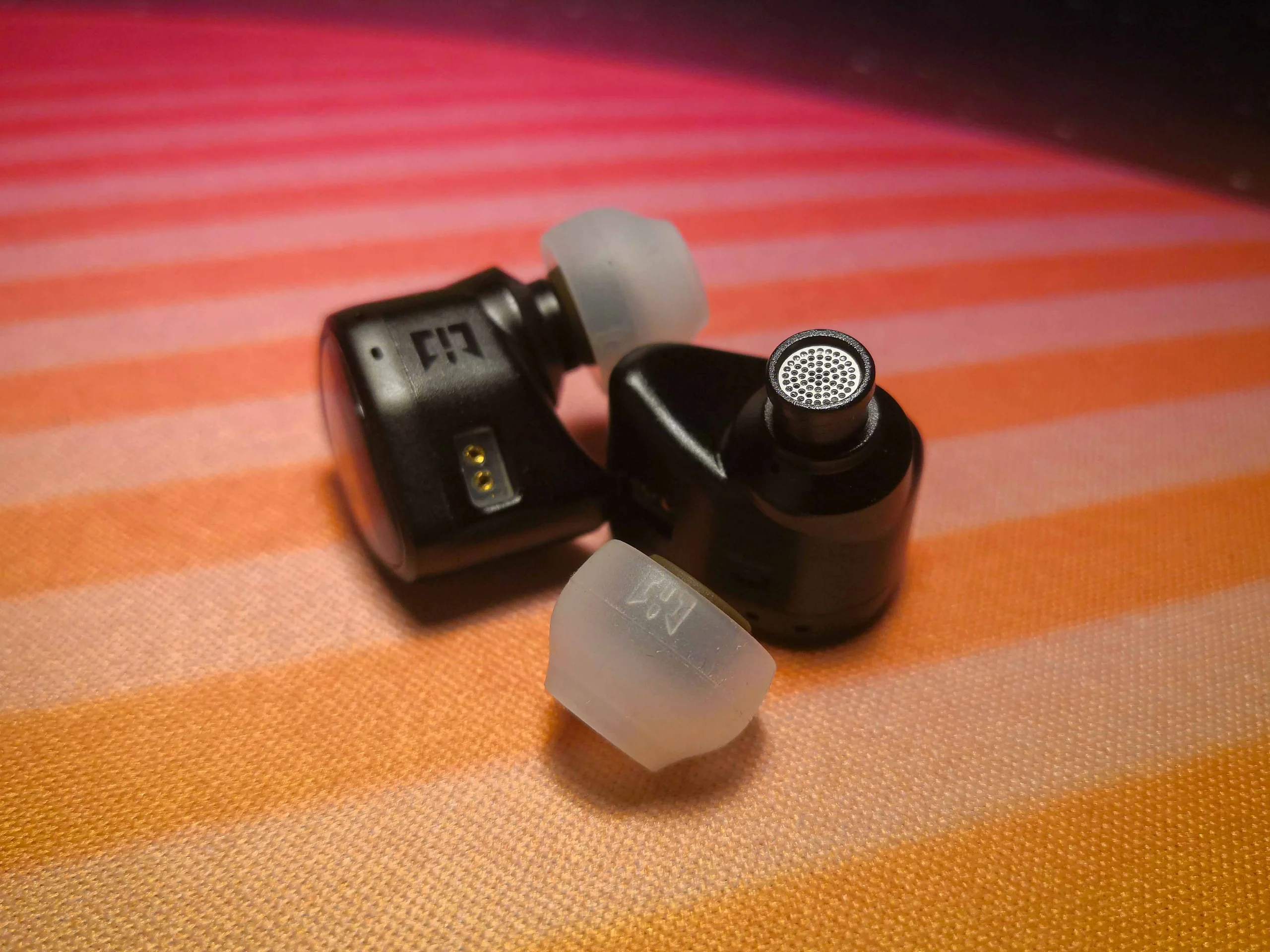Pros: –
- Well balanced, almost neutral bass response that’s tactile, punchy and well-defined.
- Excellent sub-bass extension and texture capable of reaching almost the lowest threshold effortlessly clean.
- Pristine midrange, with excellent clarity has great organic timbre as well.
- Superb vocal reproduction, detailed, smooth and well-articulated.
- Crisp, mildly airy, with a well-extended, detailed treble response
- Treble sparkle and brilliance is good, smooth and sibilance is not accentuated
- Snares, drum crashes, hi-hats, and etc sounded accurately natural, organic.
- Jammed pack with accessories.
Cons: –
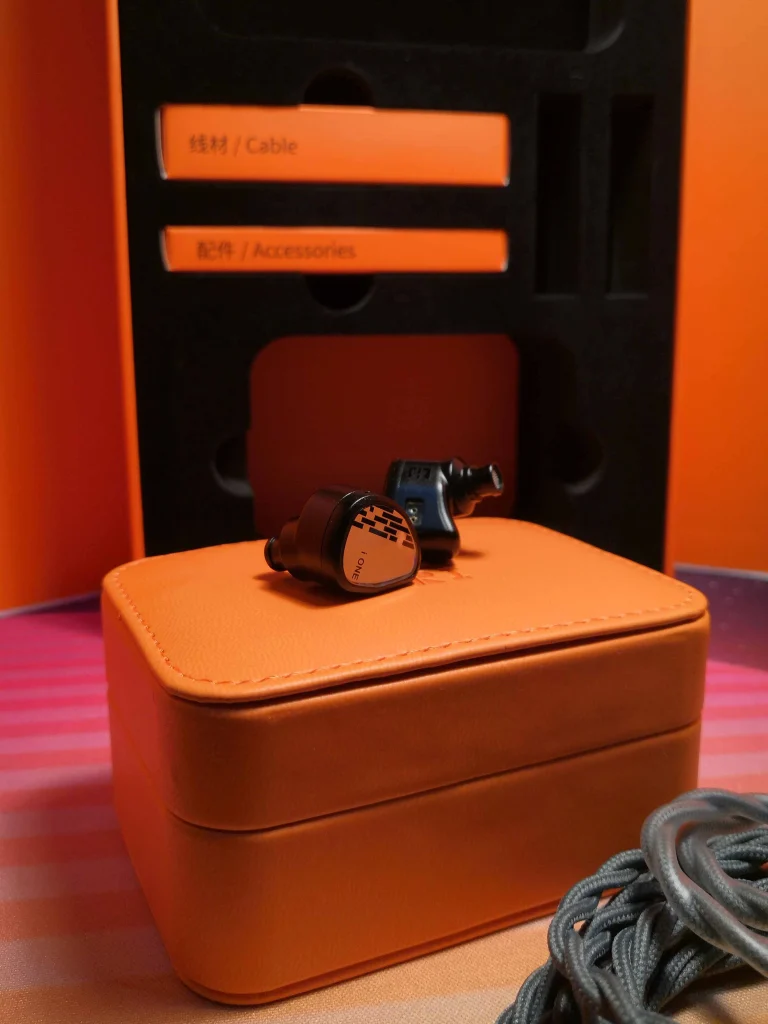
- This is my own personal unit that I’ve acquired from recent Mid-Autumn Festival giveaway, courtesy of KBEAR and TRI. That’s being said, I’m free from any bias or influence from their side despite being given the trust and opportunity to review.
- All opinions and thoughts are solely based on my experience and knowledge about audio and my sound preference.
- I haven’t had much experience with in-ear around this price bracket. Hence, I can’t give a comparison between it’s similar counterparts.
- This review is done using only the accessories provided within the box itself.
Introduction
TRI iOne is the latest flagship from TRI Audio in their i-Series line-up. With a configuration consisting of a single-dynamic driver and a retail price that came in at just $279. Fortunately, you can get a set with a special discount for only $249 on 15th October in conjunction with it’s official release, so make sure you don’t miss out! The iOne is set to have a shout on some similar mid-range in-ears below the $300 market. Such as, the Tanchjim Oxygen, DUNU Falcon Pro, Thieaudio Elixir and many more.
Specifications
- Driver : 10mm Carbon PET diaphragm with external N52 NdFeB Magnet Circuit Design.
- Impedance : 24±2 Ohms
- Sensitivity : 109±2dB (no units provided)
- Frequency Response : 20Hz-20kHz
- Cable : TRI Wolfram 3.5mm plug, 2-pin (0.78mm) 4 core OFC shielding pure silver cable
Packaging
The iOne came in a rather large, thick flip box with a cardboard lid inside that features various professional on-stage equipments and nature. To me, it hints that this in-ear is probably marketed for professionals such as on-stage performers, audio engineers and producers. Plus, TRI’s aims in delivering sound that’s natural as possible with the brand new iOne.

As we explore further, the product was beautifully presented with a tidy layout of accessories and the in-ear itself, snuggly fit in a cut-out foam like chicks cuddling in their nest during the cold weather.

In terms of accessories, you’ll receive a simple leatherette case and a soft, nicely padded mesh bag for your in-ear. A cleaning cloth and a small brush is also included inside, which certainly handy as the glass finish are absolute magnets for fingerprints and dusts.
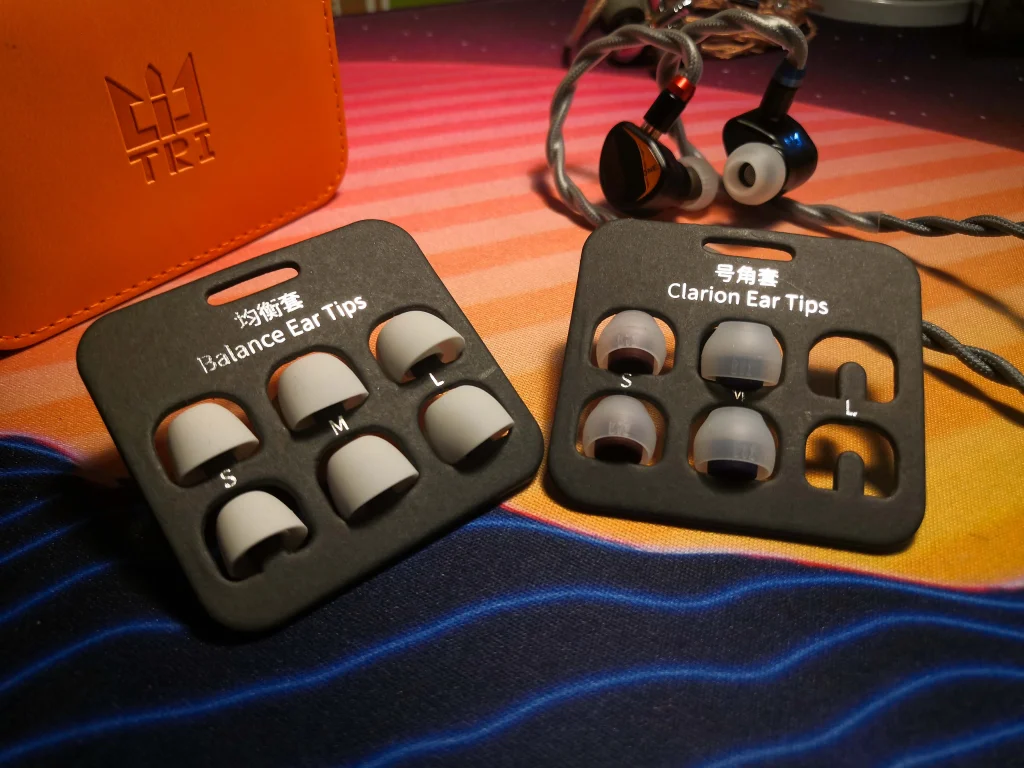
Next, you’ll receive two sets of eartips. Which are the Balanced eartips and also the recently released Clarion eartips. To make things short, the balanced eartips elevates low-end and taming treble with it’s narrower bore, albeit it made the iOne felt slightly enclosed and loses it’s treble extension slightly. Meanwhile, the Clarion is the opposite with it’s wide bore, detail retrieval and spatial capabilities improves quite noticeably.

Stock cable included with the IEM, is one of TRI’s higher-end model cable, which is the TRI Wolfram. It’s a great cable without a doubt. They’re well built, nicely braided, non-microphonic and certainly matching the aesthetics. Albeit, I wish the cable a tad softer and lighter for better comfort. The Wolfram will come in with two variants to choose, the standard 3.5mm (SE) and a 4.4mm Pentacon (Bal) which will be released soon.
Build/Comfort
What strikes me immediately is the weight and size of the iOne. They’re quite hefty and large for a single-dynamic, the aluminium alloy built is complemented with a precise machining and smooth finish. The 2-pin connections are sturdy and firm. The iOne came in two colour options, which are Silver and the other variant is Black as on my set.
When speaking about ergonomics, they’re quite comfy but could be the opposite after long usage, notably around the cymba conchae. Fundamentally, the outward part that rests on the cymba is supporting the sheer weight of the iOne.
To add more, the iOne has a rather short and large 6mm in diameter nozzles. Because of it, I found the fitting to be quite difficult, as I had to use the largest eartip size available to get proper seal. Thankfully, the Clarion suits perfectly for me regarding the fitting, plus it sounded the best to my ears
Isolation
Quite average, due to it has multiple vent holes on each sides. These should have zero problem to be used in outdoors and public as long as the optimum fitting and seal is achieved

Scalability/Source
I tested the iOne through multiple platforms such as;
- Spotify + Local files (FLAC, WAV, DSD) > SMSL Sanskrit 10th MKII > Aune X7s
- Letshuoer DT02 DAC/AMP dongle
- Notebook
- Smartphones
The iOne is scales very well with various equipments, even low-powered devices should have no problem driving these optimally. For example, on mobile setup the Letshuoer DT02 dongle which has 1Vrms@32Ohms (3.5mm) only requires me to crank up my phone volume up to 2-4 times (depends on which track is playing).
Although, when plugging into much powerful sources, the iOne has a marginally slight increase in the higher frequencies. As test goes, treble became slightly crisper and has more shimmer almost like there’s a silvery edge sound to it. Either way, keeping the iOne hooked up into a low-powered device is the way to go.
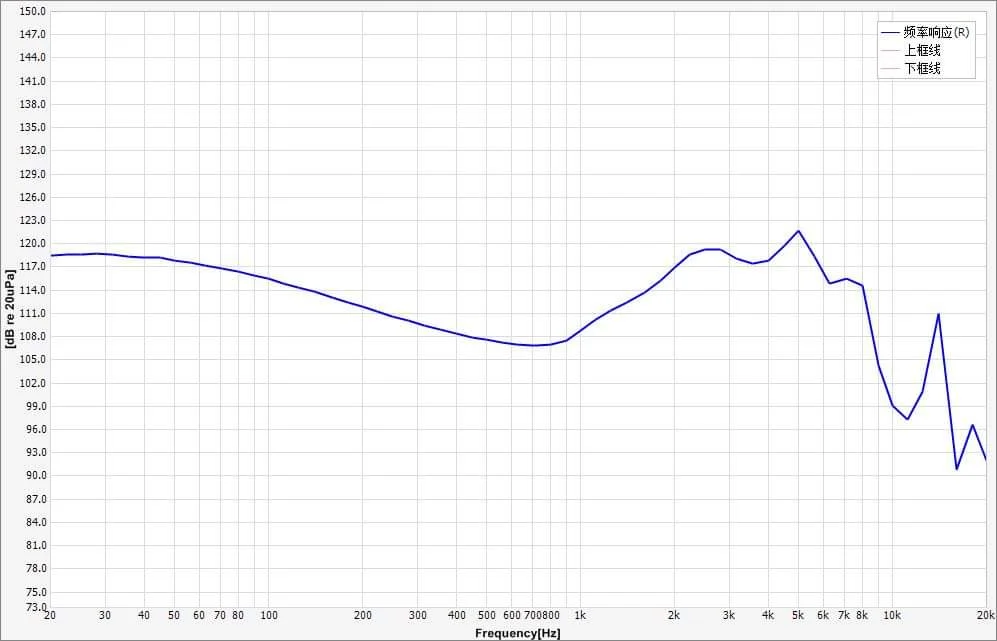
Sound Quality
Starting off with bass, the iOne has a well-balanced, very clean and well-executed bass response. By referring closely to the reference graph, it showed the iOne has quite a steep V-shaped curve (refer Diagram 1). To my surprise, from what I’ve critically listened while burning them in for the past several weeks (30+ total hours approx), that doesn’t seem to be the case here. It actually has a much leaner, smoother bass than what I anticipated.
The iOne has a more pronounced upper-bass energy than it’s mid-bass, impressively provides a nimble/tactile punchy bass. It’s lower-end is well-defined, has good texture rendering and capable of reaching almost the lowest threshold. Apart from the bass resolution which is rather average, the iOne has an overall solid performing bass. Thus, in my opinion the iOne is oriented for those who adores low-end quality over quantity.
As we dive “deeper”, sub-bass extension and decay is excellent. Rumbles and reverberations effect, deep textured sub-bass in Hollow (16-bit Remix) by Björk ft 16-bit and tactile, snappy bass sound in Hunter by Björk, recreated effortlessly with flying colours.
Meanwhile, in Anesthetize by Porcupine Tree, sumptuous electric guitars sound are easily distinguished, deep sub-bass provides nice grunt. Drum hits are superbly coherent, tactile and chesty with nice weight and depth. Thick, energetic, satisfying bass renditions in Aquatic Mouth Dance by Red Hot Chilli Peppers brilliantly presented with good energy and tone definitions between basses.
Next, as for midrange I absolutely adore mid-centric and forward in-ears. The iOne in the other hand, has a rather recessed yet pristine, engagingly smooth euphonic midrange. I chose Mad About You (Live at Koningin Elisabethzaal) by Hooverphonic and Whiskey Lullaby (ft Allison Krauss) by Brad Paisley to test vocal reproduction capabilities. Easy to say, I’m impressed by the cleanliness, clarity and realism that has been brought in terms of vocal presence, in both male and female voices. Both are well-articulated with great clarity that exposes natural vocal texture grain, despite a slightly leaner profile, less weighty for male voices.
As we continue, I tested the iOne with Timbres by Yosi Horikawa and Sabrosalsa by Sergio Lara for timbre and separation. Various instruments and percussions are portrayed brilliantly, neatly separated, guitar plucks has nice fluidity with decent layering even on busier part of the tracks with impressive timbral quality.
Higher frequencies in the iOne is no slouch either. It’s crisp, detailed, mildly airy and well-extended. Treble sparkle and brilliance is good, has a pleasant shimmer, and inoffensive. Plus, sibilance was not accentuated for most of my listening sessions. Cymbals, hi-hats, crashes and etc were also sounded pleasingly natural and organic.
Albiet, in all honesty there are some negatives that I simply can’t ignore, such as a slight smearing when given tracks that has quick transients between a single/more elements such as Psychosocial by Slipknot and Ignorance by Paramore. Which can be heard at the part of the song between drum crash being hit at a fast tempo.
Furthermore, the treble in the iOne sounds a tad silvery/metallic, slightly has a sharp edge as well due to the peak at 5kHz. Thus, it does not shy to reveal harsh details when feeded with poor recorded tracks which will results into ear fatigue during prolonged listening.
Technicalities
In my opinion, detail retrieval, dynamic range and spatial imaging are the strong technicalities of the iOne. Listening to Drum Improvisation by Jim Keltner, each of his drum strikes on the toms, cymbals, snares, and even bits of microdetails in the background are clear with great imaging and separation. Resolution and layering in the iOne I’d say was quite average.
Meanwhile, soundstaging is quite spacious, it has good width than depth and reverberations were naturally holographic. The album Explorations in Space and Time by Jamey Haddad, Lenny White and Mark Sherman is a perfect example to test soundstaging capabilities.
Lastly, dynamic range is excellent. For this, I used a WAV audio sample (in the video’s description box) from ABYSS Headphones where they play a sound of a drum and a bell. The drum will always play at a constant volume, while the bell will gradually become quieter. Out of 7 counts, the iOne managed to score a generous 6.

Conclusion
First and foremost, I have my greatest gratitude towards KBEAR/TRI Audio, for the golden opportunity and given trust on me to publish a review about their new flagship in-ear monitor.
To sum up everything, despite the iOne has quite some of its own negatives such as fitting and minor issues as well in the higher frequencies as per mentioned above. But all and all, I genuinely think that the new iOne flagship is an impressively well-tuned IEM. It was a bold move from TRI to came up with a single-dynamic driver IEM, instead of jumping into the planar bandwagon.
Therefore, it’s well-balanced tuning with technicalities that’s well above my personal expectations, makes it versatile piece of audio equipment for critical listening, while still being enjoyable at the same time. Plus, complemented by it’s sheer immaculate built quality and aesthetics. The iOne is definitely one impressive new contender, which had already seen some similar single-dynamic heavyweights competing for the below $300 throne.
To make purchases, head to KeepHifi via this link! (not affiliated)
https://keephifi.com/products/tri-ione
You could also make purchases at KBEAR’s official AliExpress store via this link (not affiliated)
https://a.aliexpress.com/_mspBxZ2

